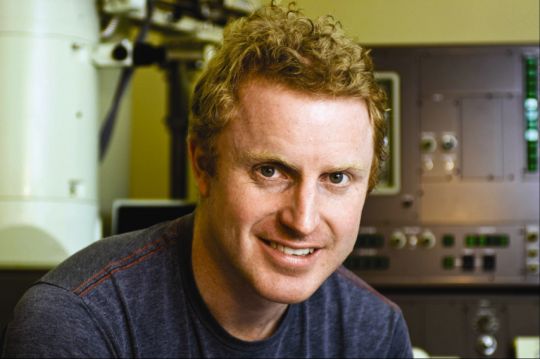John Watt
John Watt completed his PhD with Dr Richard Tilley and was a member of the Nanoparticles and Quantum Dot Research group.

In 2009, John won the MacDiarmid Young Scientist of the Year and the Prime Minister’s MacDiarmid Emerging Scientist Prize.
The Young Scientist competition is run annually and is open to postgraduates undertaking research and involves candidates presenting their work to various audiences, including a high school audience and a panel of five judges.
“The prizes gave me great exposure and allowed me to stay on in New Zealand for a few years to continue my work” John says.
“My research focuses on the size and shape control of nanoparticles - we make them in a solution using chemical techniques. On the nanoscale, the shape of the particle becomes really important in determining the properties of the material. With silicon for example, just by changing their shape, nanoparticles change from bright blue to bright yellow – right across the colour spectrum.”
John was born and educated in Napier and studied at Massey University before working in Melbourne for two years. He was drawn back to Wellington for the lifestyle and by an interest in Richard Tilley’s nanotechnology research.
“Dr Tilley has been brilliant and a true mentor in terms of what I've learned, not only about nanoparticle research, but also about the ‘business of science’ and how to develop a career in science. I was very pleased to see him recognised with the Easterfield Medal this year too.”
“The School of Chemical and Physical Sciences is very strong. There's some world leading work being done here by some top researchers. The research environment is very supportive and we've got excellent instrumentation available. We're definitely leading the way in solution phase synthesis of nano-particles globally.”
“There are a lot of commercial applications for our research. I'm worked on palladium, which is used in car catalytic converters, so my work was directly applicable to that industry. Nanoparticles are also being developed for use as MRI contrast agents and attached to paint particles and used as solar cells for houses. The applications for nanoparticles are immense.”
